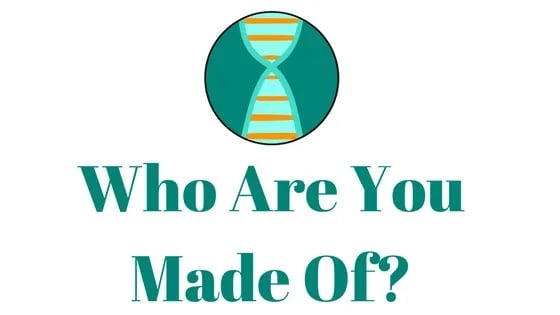Have you tested your DNA with 23andMe? In this post, you will learn everything you need to know about the biggest 23andMe update so far.
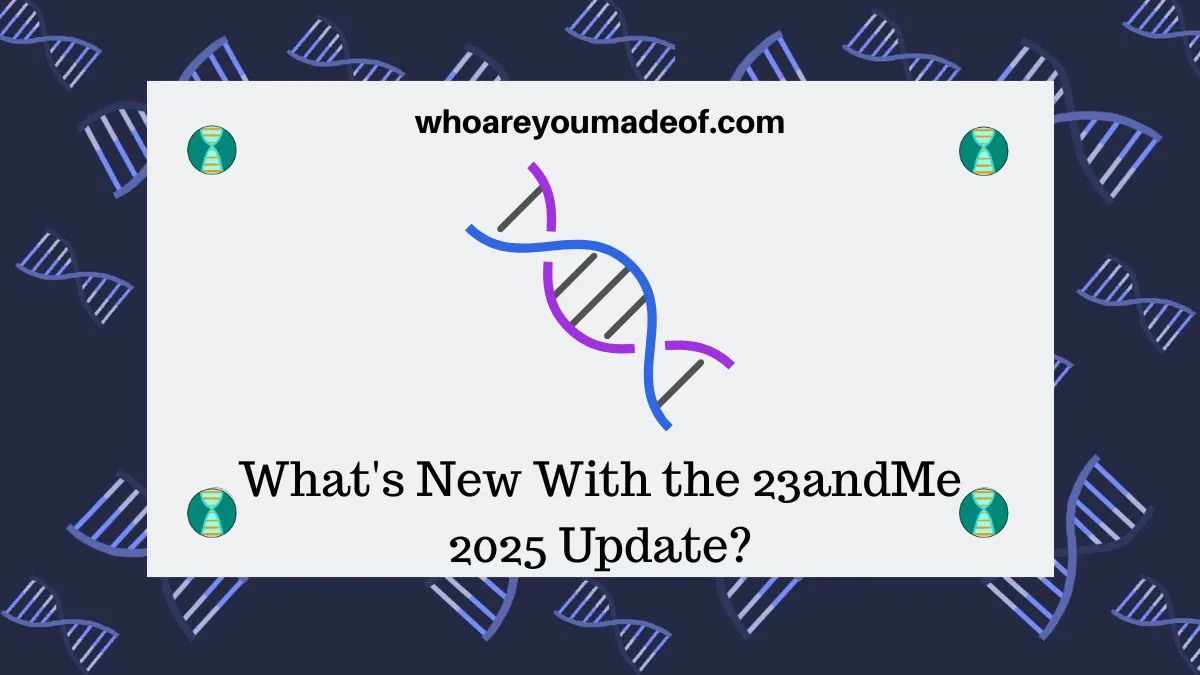
I always get excited when there is a DNA results update on 23andMe because it means that DNA results will become more accurate and I might even learn something new about my ancestors.
What is new with this update?
The focus of the 2025 23andMe update was to provide more accurate and specific results. In this update, we see many new population regions added in Europe, as well as North and South America.
23andMe also reports that for this update, they are using a new, more accurate method to phase our DNA data to determine which DNA came from our maternal vs. paternal side. They then compare our phased DNA to reference populations for regions all over the world to determine where our ancestors may have lived.
Why more European regions are a big deal with this update
This is the first time since 2012 that European populations have been updated, so it is a very exciting update for those with any European ancestry. For people with Indigenous ancestry in the Americas, this update should also provide more insight into which part of the continents your ancestors were likely from.
These changes bring the total number of regions around the world tested for in our DNA to 4250. We also no longer see the term "broadly" associated with regions (i.e. "Broadly Northwest European") on our main results page, though some regions might still have the label "broadly" with lower confidence levels in the DNA Painting tool.
Below, I have listed the new populations that might show up on your updated 23andMe DNA results if you have ancestors from Europe, North America, or South America.
New European ancestry populations:
- Albanian & Macedonian
- Andalusian, Asturian & Castilian
- Aragonese & Catalan
- Austrian & Southern German
- Basque
- Belarusian, Polish & Ukrainian
- Belgian, Rhinelander & Southern Dutch
- Bosnian, Croatian, Montenegrin & Serbian
- Bulgarian, Moldovan & Romanian
- Canary Islander
- Czech, Hungarian, Slovak & Southern Polish
- Danish
- Dutch & Northern German;
- English
- Estonian
- Finnish
- French
- Greek
- Icelandic
- Irish
- Kosovar & Northern Albanian
- Latvian
- Lithuanian
- Maltese
- Northern Italian
- Norwegian
- Portuguese & Galician
- Russian
- Sardinian
- Scottish
- Slovenian
- Southern Italian
- Swedish
- Swiss, Southwestern German & Western Austrian
- Welsh
New Indigenous American ancestry populations:
- Arctic North American
- Southern Mesoamerican
- Northern Andean
- Western North American
- North American
- Central Andean & Amazonian
Hopefully, in future updates we will see even more specific results for those with indigenous North and South American ancestry. Of course, we always want more details no matter where our ancestors were from, and I'm sure future results will continue to strive towards this goal.
We can now see the previous versions of our results
With the fall 2025 update, 23andMe has added an update history section to our results. This means that we can easily compare new results to the previous version. Customers with the 23andMe Premium subscription on their profile can see all of the previous versions of their results.

This new feature is called "Version History", and you can access it from your main Ancestry Composition results page. The default view is the summary of your results, but you will see the option to see previous versions of your results in the "Version History" tab.
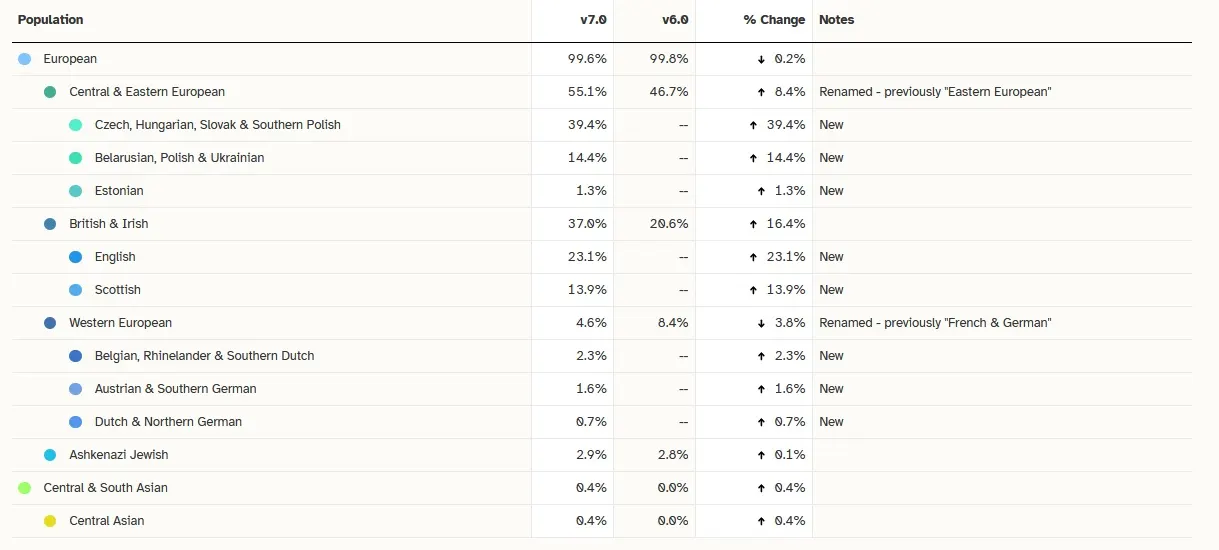
The image above shows the version history for my mother's updated results compared with the previous version. There is a column that shows the percentage that she had for each region in the previous and updated results, as well as a column that indicates whether the percentage when up or down and by how much.
In addition, there is a helpful "notes" column that contains information about whether a region is new. This is helpful for big updates when we have new regions that were previously combined with another region, or a region that changed names,
Which 23andMe customers got this update?
If you tested with 23andMe prior to this update, I highly recommend logging into your 23andMe account to see what's new on your results. Anyone who tested with the V5 genotyping chip, which they began using in late 2017, will have automatically updated 23andMe results.
Customers who tested prior to 2017 and were eligible for an chip upgrade may also see updated results. If you didn't receive this update because you took a test with an older chip, you may have the option to either purchase a chip upgrade kit.
If not, you can always do a new DNA test to get access to these more accurate, updated results.
Example of updated 23andMe results for the 2025 update
As an example of updated 23andMe results, I am sharing the results of someone who has both indigenous North American and European ancestry. These results belong to my husband, who has given permission for his results to be shared and discussed.
His primary ancestry is Indigenous American which shows up as 90.1%. Along with this higher percentage of indigenous compared to the previous version of results (increased from 89.2%), he received eight new regions that had not previously shown up for him.
The new regions on his results are indicated by the green "new" tag to the right of the name of the region. Some of these regions are completely new for 23andMe results this update, and others are new to my husband's results and have perhaps been added due to their new, more accurate method of calculating results.
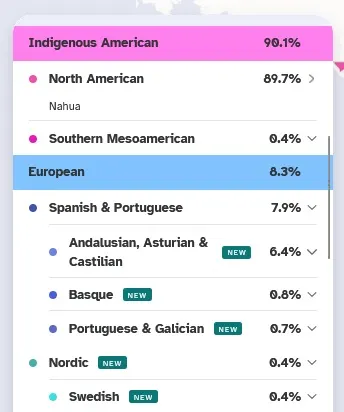
It is nice to see a general "Spanish and Portuguese" separated now into three different, more localized regions. According to these new results, my husband might have ancestors from the Andalusian, Asturian & Castilian; Basque; and Portuguese & Galician regions of the Iberian Peninsula (and the adjacent Atlantic Islands area) of Europe.
While these labels still do encompass relatively large areas of diverse cultures, they do narrow things down a bit more than the previous "Spanish and Portuguese" label.
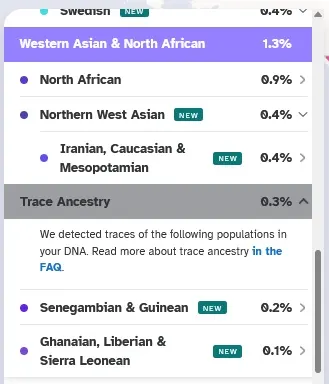
His prior results did include West Asian and North African in the previous version, but the updated results show Northern West Asian, a region that extends from Turkey to Iran, with "Iranian, Caucasian, & Mesopotamian" as the specific sub-region.
You might notice that there are several regions on his results that show less than 1% DNA matching. Personally, I am inclined to interpret these small percentage regions as meaning that he likely has ancestry from the general area.
He shows small percentages matching the new Nordic region, the Northern West Asian regions, as well as the two west African regions. He has consistently shown small amounts of northern European, as well as North and West Africa, on his results.
However, the exact regions tend to shift around a bit, which I take to mean that we may never know 100% for sure which part of Africa and Europe these very distant ancestors lived in.
For anyone who is interested, below is the full comparison for the new and previous versions of his results.
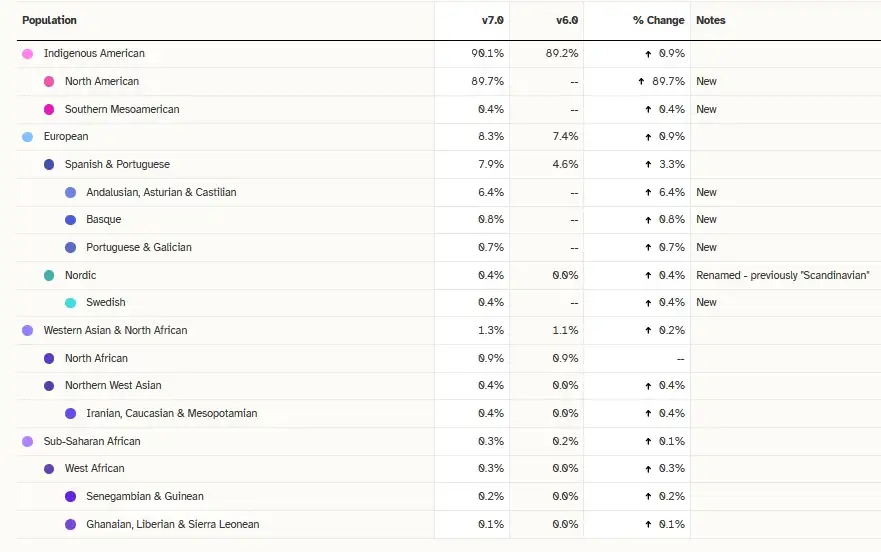
Conclusion
I hope that this post has helped you understand more about the latest 23andMe ancestry composition results update, and how these updated results can help you learn more about your family tree.
If you have any questions about something that you read in this post, or if you would like to share a new bit of information that you learned from your own updated results, I would love to hear from you in the discussion below.
Thanks for reading today!
